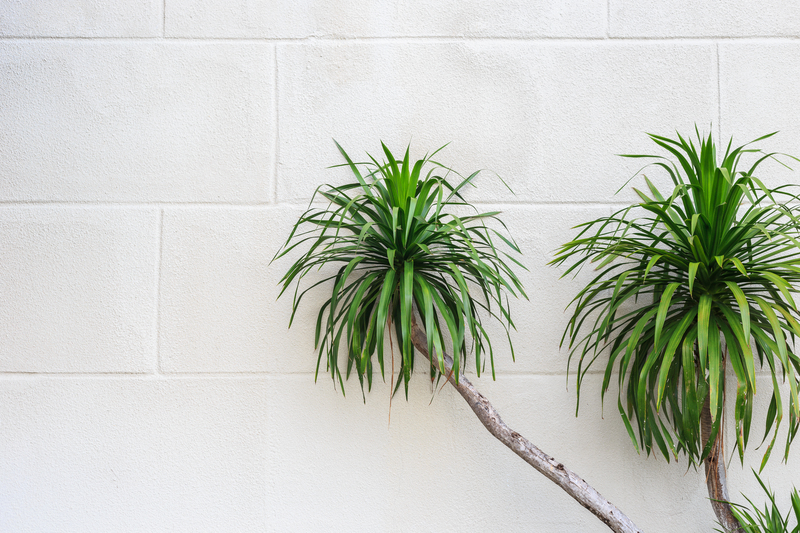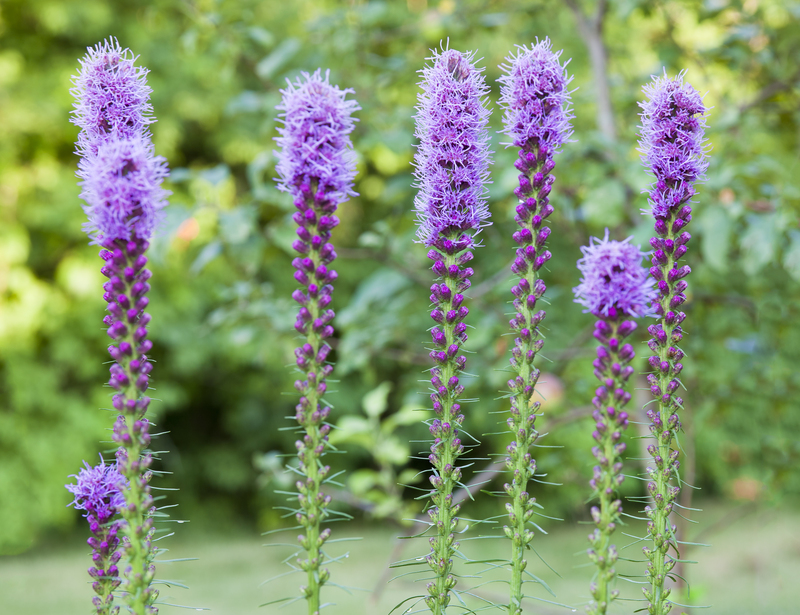Build a Dynamic and Interactive Garden for Young Explorers
Posted on 19/09/2025
Build a Dynamic and Interactive Garden for Young Explorers
A well-designed garden is more than just a beautiful addition to your outdoor space--it's a magical, living adventure that can inspire curiosity, creativity, and a love for the natural world in children. Creating a dynamic and interactive garden for young explorers gives your kids a safe, stimulating environment that encourages hands-on learning, physical activity, and endless fun. Whether you have a backyard, a community plot, or a small balcony, you can transform any area into a garden paradise teeming with possibilities for young minds.
Why Build an Interactive Garden for Kids?
Children are naturally curious about the world around them. An interactive and dynamic children's garden provides the perfect canvas for exploration and discovery. From learning about lifecycles and ecosystems to engaging in sensory play, the benefits are numerous:
- Hands-on Learning: Kids learn best through experience. Gardens offer real-life science, math, and art opportunities.
- Physical Activity: Planting, watering, and exploring keeps children active and healthy.
- Connection to Nature: Being outdoors fosters appreciation and respect for the environment.
- Emotional Well-Being: Gardening reduces stress and promotes mindfulness in children.
- Creativity and Imagination: Gardens ignite storytelling and imaginative play in unique, ever-changing settings.
How Interactive Gardens Benefit Young Explorers
Designing interactive gardens for kids is more than just planting flowers. It's about making spaces where children can touch, smell, hear, and see the magic of nature. Here's why interactive gardens are essential:
- Sensory Engagement: Multi-sensory experiences help in developing fine and gross motor skills.
- Social Skills: Collaborative gardening fosters teamwork, communication, and responsibility.
- Educational Value: Observation and participation deepen understanding of biology, ecology, and nutrition.

Planning Your Dynamic Garden for Young Explorers
Before picking up your spade or plant, careful planning is key to building a dynamic and interactive garden for children that stands the test of time. Ask yourself these questions:
- How much space do I have? Smaller gardens require creative use of vertical and container planting.
- What are the ages and interests of the children? Younger kids love tactile activities, while older ones may enjoy science projects or quiet reading nooks.
- What's my climate? Select native and resilient plants suitable for your local conditions.
- How much maintenance can I manage? Choose low-maintenance elements for busy families.
Design Elements to Include in a Kids' Interactive Garden
- Pathways and Labyrinths: Curving trails, stepping stones, or simple mazes for navigation and imaginative play.
- Secret Hideaways: Living willow huts, tunnels of sunflowers, or tepee structures offer cozy, shaded nooks.
- Climbing and Crawling Features: Bean teepees, trellises, or balance logs cater to adventurous spirits.
- Sensory Zones: Designate areas just for touching, smelling, or listening with varied textures and plants.
- Learning Stations: Install observation stations for insects, birds, and weather. Add chalkboards for jotting notes.
- Water Elements: Small ponds, bubbling fountains, or DIY mud kitchens foster water play and science discovery.
- Art and Building Spaces: Outdoor easels, mud-pie kitchens, or weaving looms fuel creativity and crafts with natural materials.
Choosing the Right Plants for a Children's Garden
The heart of any interactive garden for young explorers is, of course, its selection of plants. Successful children's gardens combine durability, sensory appeal, and safety.
Plant Characteristics to Consider
- Non-toxic: Always choose plants that are safe for children and pets.
- Sensory-Rich: Select specimens with interesting textures, colors, fragrances, and forms.
- Edible: Berries, herbs, cherry tomatoes, and snap peas are both delicious and educational.
- Pollinator-Friendly: Butterfly-attracting flowers, milkweed, and native wildflowers support local wildlife.
- Interactive: "Touch-me-not" plants, lamb's ear, and snapdragons are fun to handle and observe.
Suggestions for Kid-Friendly Plants
- Lavender: Fragrant, calming, and attractive to bees and butterflies.
- Sunflowers: Tall, dramatic, easy-to-grow, and their seeds can be harvested to eat or feed birds.
- Lamb's Ear: Soft, tactile leaves perfect for sensory play.
- Sensory Grasses: Feather grass and fountain grass move beautifully in the wind.
- Herbs: Mint, basil, and chives are safe to touch, taste, and smell.
- Strawberries: Compact, productive, and delicious right off the vine.
- Sugar Snap Peas: Quick-growing and fun to pick and eat straight from the pod.
Enriching Nature-Based Activities for Young Gardeners
A dynamic interactive garden shines when children are engaged through hands-on, playful activities. Here are some engaging ideas to try:
Nature Scavenger Hunts
- Send kids on missions to find leaves, bugs, feathers, and seeds.
- Create picture-based checklists tailored to your garden's unique features.
Bug Hotels and Butterfly Feeders
- Build DIY bug hotels from pine cones, bamboo, and plant stems to attract beneficial insects.
- Hang a butterfly feeder using a shallow dish, fruit, and sugar water.
Grow-and-Tell Journals
- Encourage children to draw, photograph, or write about garden discoveries.
- Keep a growth chart of plants and insects seen throughout the year.
Garden Art Projects
- Paint rocks as markers or story stones.
- Create wind chimes with shells, sticks, or recycled materials.
Outdoor Storytime and Reading Corners
- Set up a blanket or hammock under a shady tree for reading garden-themed books.
- Host storytime sessions where kids can act out nature-inspired tales.
Designing for Safety and Accessibility
No matter how interactive a garden is, safety and accessibility are paramount when it comes to spaces for children. Here's how to create a safe garden for young explorers:
- Clear Sightlines: Arrange structures and zones for easy adult supervision.
- Soft Edges: Use mulch, sand, or grass for play surfaces instead of hard stones.
- Non-toxic Materials: Opt for untreated wood, natural stones, and pet-safe plants.
- Shaded Areas: Plant trees or install canopies for relief from the sun.
- Accessible Paths: Use wide, level paths and raised beds for all ages and abilities.
Encouraging Year-Round Outdoor Exploration
A truly interactive and dynamic children's garden changes with the seasons, sparking wonder all year long. Here's how to maximize year-round exploration:
- Spring: Plant wildflower seeds, install rain gauges, and observe pollinators.
- Summer: Harvest fruits and veggies, host bug safaris, set up water play areas.
- Autumn: Collect leaves for crafts, watch migratory birds, plant bulbs for spring.
- Winter: Create bird feeders, look for animal tracks, explore frost patterns.
Each season brings new lessons and opportunities, helping children build a lifelong connection to the rhythms of the natural world.
Tips for Keeping Children Engaged in the Garden
Sustaining children's interest is easier when they have ownership and freedom. Consider these tips:
- Let Kids Choose: Allow them to pick plants, garden areas, and activities.
- Assign Special Jobs: Watering, harvesting, or making signs fosters responsibility.
- Celebrate Successes: Acknowledge small milestones, like first blooms or harvests.
- Embrace Mess: Dirt, mud, and water aren't just okay--they're encouraged!
- Invite Friends: Group play and shared exploration heighten excitement.
Reduce, Reuse, and Recycle: Eco-Friendly Garden Ideas
An interactive garden for young explorers is a perfect place to introduce sustainable habits. Try these eco-friendly projects:
- DIY Planters: Upcycle old boots, cans, or containers for quirky plant pots.
- Rainwater Harvesting: Set up simple barrels to teach water conservation.
- Composting: Involve kids in making and using compost to enrich the soil.
- Wildlife Habitats: Leave some brush piles or deadwood for birds and insects.

Conclusion: Gardening for Future Explorers
When you build a dynamic and interactive garden for young explorers, you're creating more than just a landscape. You're nurturing inquisitive minds, fostering a bond with nature, and igniting passions that will last a lifetime. Every sensory-rich corner, hidden path, and edible treat is another invitation for children to wonder, create, and thrive outdoors.
Whether your space is large or small, the principles of interactivity, inclusivity, and playfulness will make your garden a cherished place for kids of all ages. So grab your trowel, spark some excitement, and watch your young explorers blossom!
Frequently Asked Questions About Dynamic and Interactive Gardens for Kids
- What age is best for an interactive children's garden?
A garden can be tailored for any age from toddlers to teens. Safety, supervision, and scale are the most important factors for each group. - How do I start with limited space?
Vertical gardens, hanging pots, and container-friendly plants like herbs or cherry tomatoes are great for balconies or patios. - Can I make a garden allergy-friendly?
Yes. Avoid highly allergenic plants such as ragweed or certain grasses, and prioritize non-pollen or self-pollinating varieties. - How can I protect my garden from pets or wildlife?
Use fencing, raised beds, and select resilient, non-toxic plants. Teach children to respect wildlife visitors. - What tools are safe for children in the garden?
Choose child-sized, lightweight tools with rounded edges and always supervise their use.
Ready to build a dynamic and interactive garden for your young explorers? Start small, dream big, and let your children lead the way!

